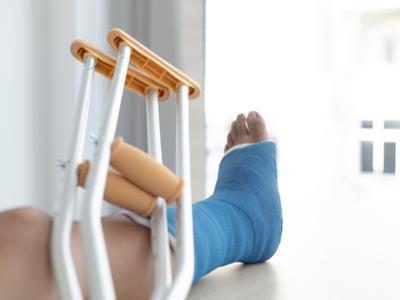Key Takeaways:
- Pain and suffering include physical and mental injuries suffered by accident victims.
- Pain and suffering damages are typically calculated using the multiplier method.
- To prove pain and suffering damages, you should work closely with a personal injury attorney.
In a personal injury accident, pain and suffering are the physical and mental injuries suffered by an accident victim.
A personal injury lawyer knows about these types of damages and how to get them in a claim or lawsuit for personal injury.
If you’ve been in a traumatic car accident, you might not only be in pain but also feel things like depression or anxiety.
You might feel things you’ve never felt before that just won’t go away.
We will learn more about pain and suffering after an accident in the article below.
You May Be Able to Collect Economic and Non-Economic Damages
In cases of personal injury or wrongful death, there are usually both economic and non-economic damages.
Economic damages are monetary losses, like your medical expenses and property damage from the accident.
Most of the time, it’s not too hard to figure out how much money you lost.
Damages that aren’t tied to money are harder to deal with because they don’t cost anything.
Pain and suffering could be used as a catch-all phrase for all non-financial damages caused by an accident.
It is at the heart of what you went through because of someone else’s carelessness and shows how much you hurt physically and emotionally as a result.
What Is Pain and Suffering?
The phrase “pain and suffering” is a legal term for both physical and mental injuries that a victim of an accident has to deal with.
After an accident, you may be able to get pain and suffering damages included in your settlement if you’ve experienced physical pain or mental pain.
Physical Pain and Suffering
Personal injuries due to someone else’s carelessness can be excruciating and last for days or weeks.
The National Institute of Neurological Disorders and Strokes says chronic pain stemming from an accident can last for weeks, months, or even years.
Some examples of physical medical conditions that may qualify for compensation for pain and suffering are:
- Internal organ damage
- Nerve damage
- Paralysis
- Broken or fractured bones
- Pulled or sprained muscles
- Neck pain
- Traumatic brain injury
- Back pain
- Dislocated joints
- Headaches
These health problems can last for years or even become permanent, causing the person to feel constant pain.

Emotional Pain and Suffering
After an accident, emotional pain and suffering can cause severe mental and emotional distress that could last for days or years.
Mental pain that doesn’t go away after an accident can cause severe pain and suffering.
Some things that can cause emotional pain and suffering are:
- Worry
- Cognitive changes following a head or brain injury
- Anger
- Grief
- Loss of the enjoyment of life
- Diminished quality of life
- Loss of enjoyment
- Post-traumatic stress disorder
- Insomnia
- Fear
- Frustration
- Psychological trauma
When someone gets hurt, they often feel emotional pain that can last a lifetime.
Calculating Pain and Suffering
The types of damages and how much money you can get for mental pain and suffering caused by an injury depends on several things, including:
- type of accident
- state laws
- types of medical treatment needed
- how long it takes for your injury to heal
- impact of the injury on your job, relationships, etc
- type of injury
- calculating method
- severity of injury
First, you might need to file a personal injury claim with your insurance company to pay for general damages.
If your insurance company doesn’t cooperate, you might need to file a personal injury lawsuit with the help of a personal injury attorney.
Most of the time, insurance adjusters and your lawyer will use one of two methods to estimate your physical pain and mental or emotional suffering.
The multiplier method and the “per diem” method are the two main ways to figure out how much pain and suffering cost.
Multiplier Method
The multiplier method has two steps to figure out pain and suffering.
The first step is to calculate the economic losses.
The second step is to multiply your economic damages by a multiplier that makes the most sense for the situation.
This number is usually between one and five depending on the injury’s severity.
This could be the case for someone who breaks a leg in a car accident.
If the total amount of money they lost because of the broken leg is $3,000, that number can be multiplied by one, two, three, or more to figure out how much you should receive for your pain and suffering.
Then that amount is added back to the $3,000.
Example:
- Economic damages: $3,000
- Special (pain and suffering) damages: $6,000 ($5,000 x 2)
- Total: 9,000
The multiplier will be lower for less severe injuries, like a sprained ankle.
The economic cost will probably be multiplied by a higher number for severe injuries like traumatic brain injuries.
Per Diem Method
Your injury attorney can also use the “per diem” method to figure out pain and suffering.
The per diem method is used much less often than the multiplier method.
It figures out the cost of pain and suffering based on how much the accident injuries affect the plaintiff on a daily basis.
With this method, plaintiffs are given a certain amount of money for each day from the date of the accident to when they are expected to reach maximum medical recovery.
Insurance companies and lawyers don’t have to use either of these methods to figure out how much pain and suffering costs, but they can serve as a guide.
How Can I Prove Pain and Suffering Damages?
To prove pain and suffering in your car accident claim or any personal injury claim, you must show clear proof of the mental and physical pain you went through in the weeks and months following the accident.
Your lawyer can help you get fair compensation for pain and suffering by using medical records, daily journal entries, witness statements, and photos.
Document Everything
Medical records and other relevant paperwork are essential pieces of evidence for any personal injury case.
When it comes to pain and suffering, doctor’s notes about how long your injuries will last and plans for how to deal with the pain can help back up your claim.
Also, if you have PTSD, depression, anxiety, or other types of mental trauma, write down what you talk about in therapy or at appointments with mental health professionals.
Keep a Detailed Journal
A personal journal or diary where you write about your pain and suffering can show an insurance adjuster, judge, or jury how your injuries affect your daily life.
Write about the following things:
- Fear of lifelong disability and pain
- Being ashamed of needing help with bathing or keeping clean
- Frustration from not being able to work or do typical daily activities
- The heartache from missing special occasions, family gatherings, or holidays
- How long the pain lasts
- How intense the pain is
- Sadness, depression, or anxiety
- The intensity of mental and physical anguish
- Where the pain is
Include as many descriptive details in your journal as you can.

Collect Witness Statements
As part of an investigation into a car crash, witnesses are often asked to give their statements at the scene of the crash.
But they are also important pieces of evidence that show what happened to you after the accident.
Ask your family, friends, neighbors, and caretakers to tell you what your life has been like since your accident, including what you can and can’t do, how your personality has changed, and what tasks they now have to do for you.
Take Photographs and Videos
Photos and videos are an excellent way for accident victims to show judges, juries, and insurance adjusters how much pain and suffering they have been through.
After an accident, pictures of you at the scene, in the hospital, and struggling with daily life can be compelling.
Contact A Personal Injury Attorney Today
If you were hurt in an accident, you might have not only medical bills and lost wages but also pain and suffering.
If you were hurt in an accident recently, contact Alexander Shunnarah Trial Attorneys to find out how we decide what counts as “pain and suffering” and how it affects your personal injury or wrongful death case.
Call us at 1-800-229-7989 for a free consultation to ensure your legal rights are protected.
